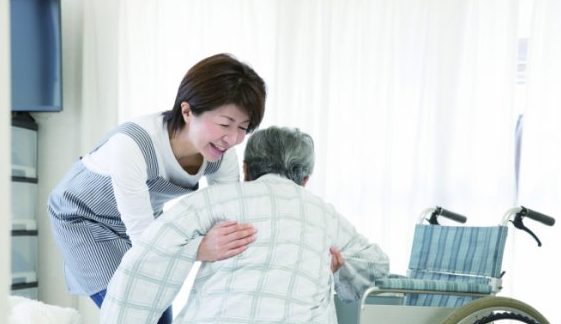On June 3, 2025, Lee Jae-myung of the Democratic Party of Korea was elected as the 21st President of South Korea. The AsiaN is publishing the hopes and expectations of Koreans for the new president and administration in both Korean and English editions. We welcome the interest, feedback, and constructive criticism of our readers.
The AsiaN Editorial Team

By Kim Hyun-jung,
Professor at Seoul National University School of Dentistry, President of the Korean Society of Digital Health, and Executive Board Member of the Asian Dental Anesthesiology Association
SEOUL: Following the presidential election, South Korea stands at a critical crossroads where it must once again set its course toward becoming a welfare state. As the country enters a super-aged society, community-based integrated care must go beyond mere social welfare policy and become the foundation of national sustainability. Yet, the treatment of care workers—who are the core providers of this labor—remains stagnant. At this urgent juncture, when realistic and pragmatic reform of community care is needed, the new president must prioritize the “redesign of community-based integrated care” and the “protection of care workers’ rights” as a top national agenda.
On March 26, 2024, the Act on the Integrated Support for Community-Based Care Including Healthcare and Long-Term Care was passed by the National Assembly. This law establishes the legal basis for building an integrated support system that provides and connects various services—including healthcare, long-term care, and daily living assistance—for the elderly, persons with disabilities, and other citizens in need of care, enabling them to live healthy, independent lives in their local communities. Notably, the law grants legal authority and responsibility to local governments across the nation to act as “control towers” of care—planning care services for residents, identifying eligible recipients, and developing individualized care plans. This is a meaningful step forward.
However, despite social consensus on the law’s intent, the actual contents of the legislation reveal several limitations. The success of this system depends on the consistency and detail of its provisions, and thus the contents of the Presidential Decree and its enforcement rules are of utmost importance. A major issue is the absence of clear regulations on securing financial resources and workforce. Moreover, even though the Long-Term Care Insurance Act (enacted in 2007 and implemented since 2008) still maintains a privately outsourced supply structure, the new law fails to provide a concrete roadmap for how to strengthen public services or how to integrate health and welfare services organically. Measures for improving working conditions, ensuring a stable workforce, and protecting labor rights are also missing—rendering the law insufficient to drive real changes in the field. Care is, ultimately, a human service. Without investment in people, there is no sustainability.
Care workers stand on the front lines of Korea’s welfare system, providing daily care to the most vulnerable populations. Yet their labor remains largely invisible in society, and they continue to be exposed to low wages and physically demanding conditions. Cure and care are fundamentally different concepts. Policy and institutional design must reflect this difference and incorporate the voices of frontline experts like care workers. With the nationwide rollout of community-based integrated care services scheduled for 2026, we must now urgently implement the following improvements in policy and institutions to move beyond slogans and establish truly pragmatic systems.
First, the government must assume responsibility for the education and training of care workers. Currently, the quality of training varies widely by region, and the effectiveness of privately operated programs is being questioned. It is especially important to systematically strengthen competencies in managing chronic conditions in the elderly, such as dementia, diabetes, stroke, oral health, and fall prevention. Nationally certified digital health education modules and on-site training programs should be introduced, and those who complete these should receive incentives such as higher qualification levels and formal recognition of experience.
Second, policies must be developed to improve care workers’ working conditions. These workers, who often fall outside the protections of the Labor Standards Act, must be guaranteed regular rest and greater employment stability. Evaluations of long-term care institutions should include criteria on care workers’ working conditions and emotional labor protection, in order to enhance both the quality of care and the quality of labor.
Third, we need to build practical models that link community care with public healthcare. Local governments should establish Community Integrated Care Support Centers that operate with multidisciplinary teams—care workers, nurses, therapists, social workers, and dental hygienists—who can play a role similar to Japan’s care managers. Real-time health monitoring using digital health technologies and predictive care based on AI can lead to efficient, preventive healthcare, ultimately reducing national health insurance expenditures.
Fourth, care work must be redefined not as simple labor but as dignified care. We must establish institutional mechanisms that recognize care work as a social contribution and public value. For example, care worker experience could be translated into credits for national pension calculations, health insurance premium reductions, or local community welfare contribution scores—all of which should be actively considered.
Lastly, a dignified death begins with dignified care. To build a society where people can pass away in their homes and where care equals welfare, we must first look closely at the lives of care workers—those who are, even now, holding the hands of the elderly.
To the new president, we ask:
“In your old age, who will care for you, and how?”
The answer lies in protecting the rights of care workers and redesigning community care with a pragmatic, reality-based approach.




